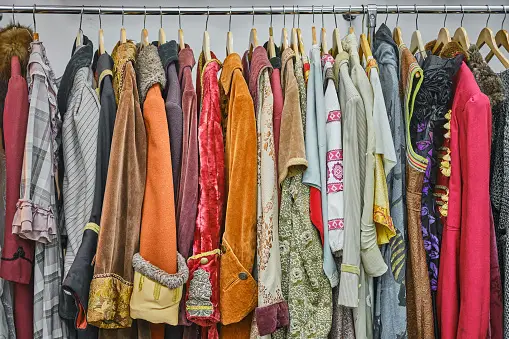Dressing for Your Body Type: Finding Styles That Flatter Every Shape
August 4, 2024

Understanding how to dress for your body type is key to achieving a flattering and confident look. Every individual has a unique body shape, and knowing how to enhance your best features while balancing your proportions can make a significant difference in how you feel and present yourself. This guide offers practical advice on identifying your body type and choosing styles that work best for your shape.
#### **1. Identifying Your Body Type**
**1.1. Common Body Types**
– **Apple Shape**: Characterized by broader shoulders, a fuller bust, and a rounded midsection with narrower hips and legs. The waistline may not be well-defined.
– **Pear Shape**: Defined by wider hips and thighs with a narrower waist and shoulders. The upper body is generally slimmer compared to the lower body.
– **Hourglass Shape**: Features a well-defined waist with balanced bust and hip measurements. The body has a curvy silhouette with proportionate top and bottom.
– **Rectangle Shape**: Characterized by a straight silhouette with similar measurements for the bust, waist, and hips. The body lacks pronounced curves and may have a more athletic build.
– **Inverted Triangle Shape**: Defined by broad shoulders and a full bust with narrower hips and legs. The body has a more angular appearance with a wider upper body.
**1.2. Measuring Your Body**
– **Bust**: Measure around the fullest part of your bust, ensuring the tape is level and not too tight.
– **Waist**: Measure around your natural waistline, which is typically the narrowest part of your torso.
– **Hips**: Measure around the widest part of your hips, usually around the top of your thighs.
#### **2. Flattering Styles for Each Body Type**
**2.1. Apple Shape**
– **Tops**: Opt for V-necklines or scoop necklines that create a vertical line and draw attention away from the midsection. A-line or empire waist tops can help define the bust and flow over the stomach.
– **Bottoms**: Choose straight-leg or bootcut pants that balance out the upper body. Avoid high-waisted styles that might emphasize the midsection.
– **Dresses**: Look for dresses with an empire waist or wrap styles that accentuate the bust while skimming over the waist and hips.
**2.2. Pear Shape**
– **Tops**: Select tops with embellishments, patterns, or bright colors to draw attention to the upper body. Off-the-shoulder or boat necklines can help balance broader hips.
– **Bottoms**: Opt for darker, well-fitted pants or skirts that streamline the hips and thighs. A-line skirts and dresses that flare out can create a balanced silhouette.
– **Dresses**: Choose dresses with a fitted bodice and an A-line or fit-and-flare skirt. This style highlights the waist and balances the hips.
**2.3. Hourglass Shape**
– **Tops**: Fitted tops with a defined waist, such as peplum styles or belted blouses, enhance your natural curves. V-necks and wrap tops can highlight the bust.
– **Bottoms**: High-waisted skirts or trousers that emphasize the waist and follow the natural curves work well. Avoid overly loose or baggy styles that can hide your shape.
– **Dresses**: Opt for fitted dresses that cinch at the waist and highlight your curves, such as sheath or wrap dresses. Avoid shapeless or boxy designs.
**2.4. Rectangle Shape**
– **Tops**: Look for tops with ruffles, patterns, or layered details to create the illusion of curves. Belted or wrap tops can add definition to the waistline.
– **Bottoms**: Choose trousers and skirts with subtle pleats or structured designs to add dimension. A-line skirts or pants with a slight flare can create a more curvaceous silhouette.
– **Dresses**: Select dresses with waist definition, such as belted or shift dresses. Layered or embellished styles can also add curves and shape.
**2.5. Inverted Triangle Shape**
– **Tops**: Opt for tops with a more relaxed fit or draped styles to balance broader shoulders. V-necklines and off-the-shoulder tops can also soften the upper body.
– **Bottoms**: Choose flared or wide-leg pants and skirts to add volume to the lower body. Darker colors or patterns on the bottom can help balance the broader shoulders.
– **Dresses**: Look for dresses with a fitted waist and A-line or skirted lower halves. Styles that create volume below the waist can help balance your proportions.
#### **3. General Tips for All Body Types**
**3.1. Fit and Fabric**
– **Fit**: Ensure that your clothes fit well and enhance your natural shape. Avoid overly tight or loose clothing that can either accentuate or hide areas you might want to balance.
– **Fabric**: Choose fabrics that drape well and move with your body. Light, breathable materials are great for comfort, while structured fabrics can provide shape and form.
**3.2. Accessories and Styling**
– **Belts**: Use belts to define your waist and add shape to outfits. A belt can transform a loose dress or blouse into a more tailored look.
– **Layering**: Layering can add dimension to your outfits. Try cardigans, blazers, or vests to create a balanced silhouette and add visual interest.
**3.3. Confidence**
– **Own Your Style**: Confidence is key. Wear what makes you feel good and enhances your unique features. Personal style is about expressing yourself and feeling comfortable in your clothing.
#### **4. Conclusion**
Dressing for your body type involves understanding your shape and choosing styles that highlight your best features while balancing proportions. By focusing on fit, fabric, and flattering silhouettes, you can create a wardrobe that enhances your confidence and complements your unique figure. Remember, fashion is a personal journey, and the best outfits are those that make you feel empowered and stylish. With these tips, you can confidently build a wardrobe that celebrates your body and suits your lifestyle.